Operation Theatre Technologist Guide . In this blog i upload study material for operation theatre technicians , anesthesia technicians , scrub nurse , ot attendants and many more .
Suction Machine, types, uses, mechanism and care
What is a Suction Machine?
A suction machine is a medical device which generates negative pressure in the collection chamber and that pressure is used to suck all the secretions through a suction tubing. Many types of attachments as per the requirement are available ( like for oral and nasal suctioning we have suction catheter , for sucking blood from a surgical site we have Yankauer suction tip, etc )
The suction machine which is also known as an 'aspirator' is one of the most important pieces of equipment in the operating room.
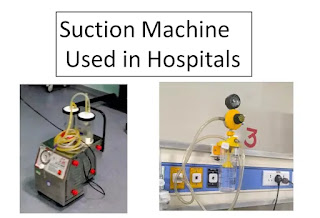 |
| Suction Machine used in hospital |
A suction machine is used for removing obstructions - like mucus, saliva, blood, or secretions from a person's airways.
In surgery, suction can be used to remove blood from the area being operated on to allow surgeons to view and work on the area.
Suction devices may be mechanical hand pumps or electrically powered pumps with or without battery system .
Indication / When is suction machine required ?
There are many conditions where we require suction machine .
For Example
- Patients inability to breath which may be due to any obstruction in airway like mucus, salivary secretions etc. and patient is unable to clear his / her airway by coughing .
- Surgical site Bleeding : surgeon need suction to suck the blood so that his vision is clear .
- Empty Gastric contents :if we need to suck gastric content from patients stomach like if patient drinked fertilizer or any chemical .( Gastric Lavage )
- ETC.
History of Most widely used Suction Tip / Attachment
First suction tip which is named as " Yankauer suction tip" is developed by an American Otolaryngologist Sidney Yankauer (1872 - 1932) in around 1907.
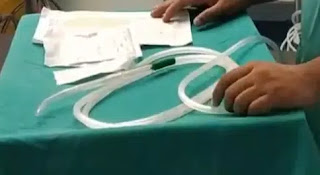 |
| Suction Machine used in hospital |
The Yankauer suctioning tool is used in medical procedures. A Yankauer suctioning tool can also be used to clear operative sites during surgical procedures and its suctioned volume is noted as blood loss during surgery.
How to Operate Suction Machine ?
- Plug in the electrical cord of the suction machine into a grounded electrical point.
- Check that the tubing from the machine to the collection jar is on and snug.
- Check that the lid to the collection jar is closed tightly.
- Attach the extension suction tubing to the collection jar.
- Turn the machine on and kink the extension tubing to block the flow of air. -If the pressure gauge did not move when kinking the tubing, recheck all of your connections. Look for leaks in the system. The lid may not be closed tightly; a tub may not be on properly or the tube in punctured.
- Look at the pressure gauge. Using the control dial, set the gauge pressure between 15” and 20” of Hg. (for an adult) -An infant or a child will use less pressure.
- After the pressure is set, connect the oral suction device like Yankauer Suction Tip or suction catheter to the suction extension tubing.
Cleaning / Care of Suction machine
- Suction container , suction tubing should be washed daily with detergent or according to local hospital policy.
- Body of suction machine should be disinfected daily with 70 % isopropanol solution.
Types of suction Machine
In time, many types of suction machines or devices were invented. Today, several types of suction machines are available for use.
1. Manual suction Machine/device.
A manual suction machine/device that creates suction without the use of a battery or electricity. These are like a mechanical hand pumps, generally, work by squeezing a pump to create a vacuum.
for easy understanding just recall the rubber Bulb which recoils to orignal shape after we squees it .
It is generally used in Infants for oral and nasal suctioning
FOOT Operated suction Machine are also available . In foot operated suction machine vacuum is generated with the help of pump and that pump moves when we apply pressure on foot pad .
2. Wall - Mounted suction Machine/ device.
A Mall- Mounted suction machine/device that generally creates suction with the use of electricity. Machines that create vacum or negative pressure is installed in another part of building( near manifold rooms ) from where all the centralized gas supply is provided .This type of suction we can mostly see in ICU, NICU, and post-operative care unit on the wall beside every patient's bed. Almost all ambulances have also onboard suction built into the wall nowadays.
3. Portable suction Machine/ device.
A portable suction machine/device works with battery technology or electricity too. Portable suction devices are designed to be lightweight and easy to move. This is easy to use and is mostly growing in popularity nowadays.
4. Makeshift suction device.
Virtually any tubular device, such as straw or thin dropper, can be used as a makeshift suction device in an emergency.
Important parts of an electronic suctioning machine
• vacuum pump
• Bacteria filter
• vacuum gauge
• Moisture trap
• Reservoir for aspirated material
• suction catheter
Suction catheter and its type
A suction catheter is a hollow tube that is inserted into the nasal and mouth to drain mucus, saliva, and other debris that obstructs a person's breathing.
• Suction-Tipped Catheters
• Little Suckers
• Yankauer catheter
How to check the proper functioning of a suction machine
To begin the test, start the device . Connect the test gauge from your suction tube to the suction catheter of the canister making certain that all canister ports are closed and all connections are secure with the regulator at full power, the test gauge should reach 300 mmHg within three seconds. Let the negative pressure continue to rise. The maximum negative pressure should exceed 500 mmHg.
Precautions for suctioning
• The suction reservoir, tubes, and connections should be cleaned and disinfected before and after use.
• The suction reservoir should be emptied before they overfill.
•Make sure the filter is not wet (keep a spare filter with your supplies). Make sure the float cut-off is not activated (if this is part of your vacuum). Check the tank for leaks and cracks.
Recommended Topics
Label List
- BASIC CONCEPTS (19)
- ANESTHESIA EQUIPMENTS (18)
- Exam (13)
- study material (12)
- MCQ FOR OT TECHNICIANS (11)
- ANESTHESIA PREPRATION (10)
- DEVICES USED IN OT (7)
- random topics (7)
- CSSD & OTHER DEVICES (6)
- FIND A JOB (5)
- QUESTION PAPERS (5)
- latest updates (4)
- DRUGS (3)
- PATIENT CARE (3)
- Registration (3)
- Surgical Instruments (3)
- History of Anesthesia (2)
- by - Ritika Sharma (1)
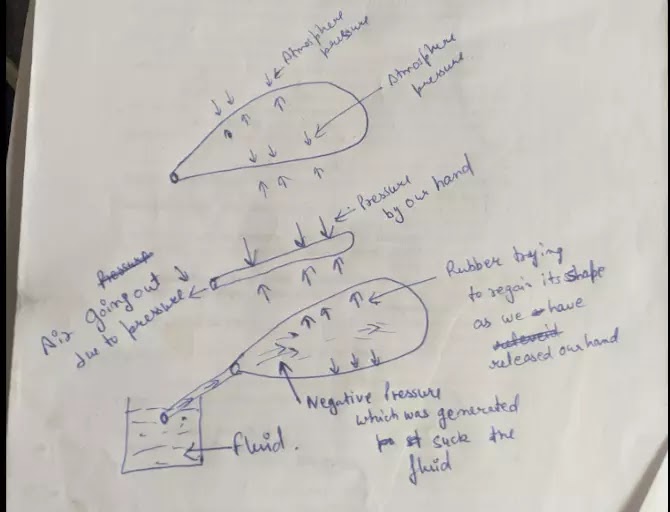



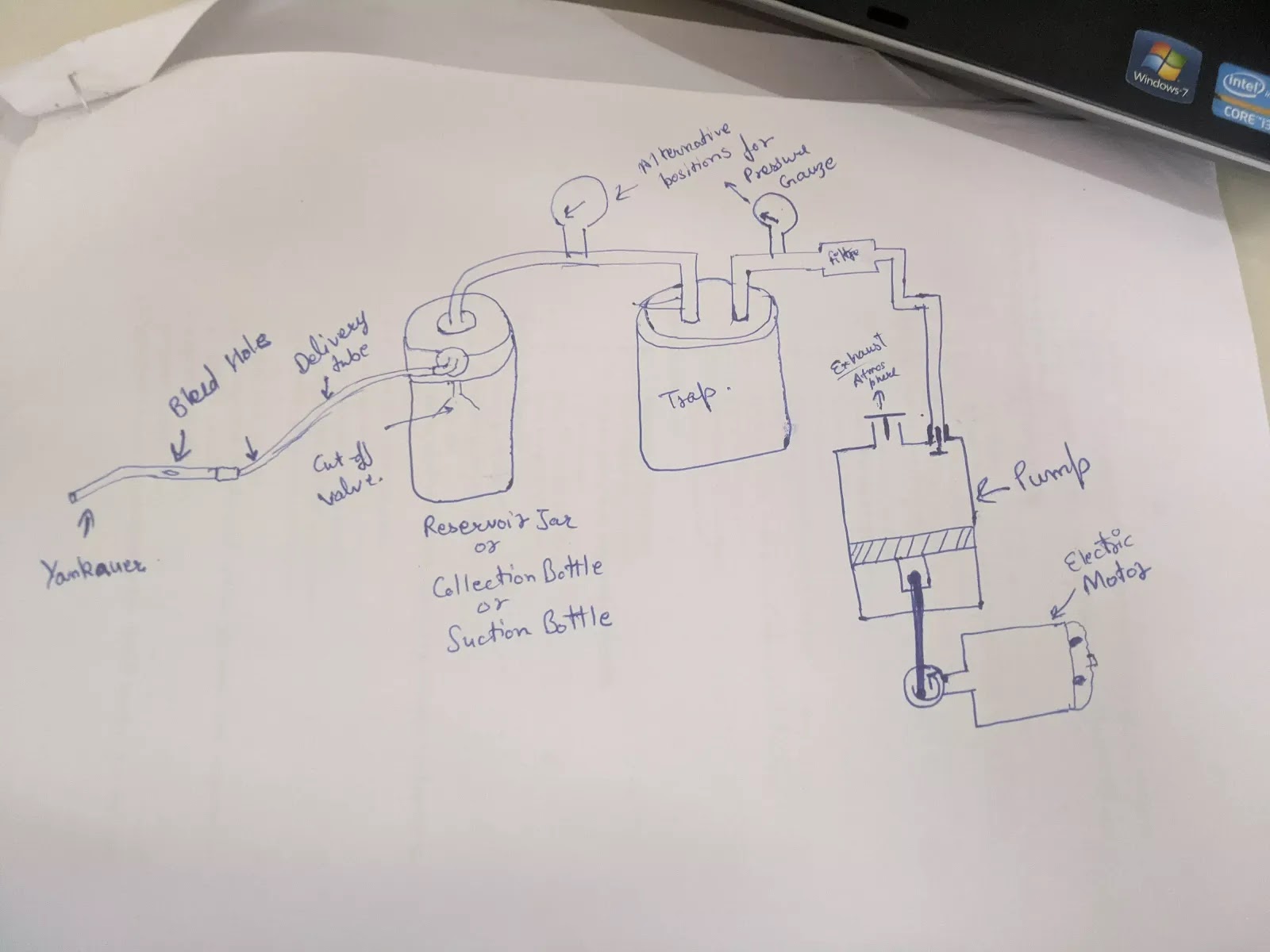
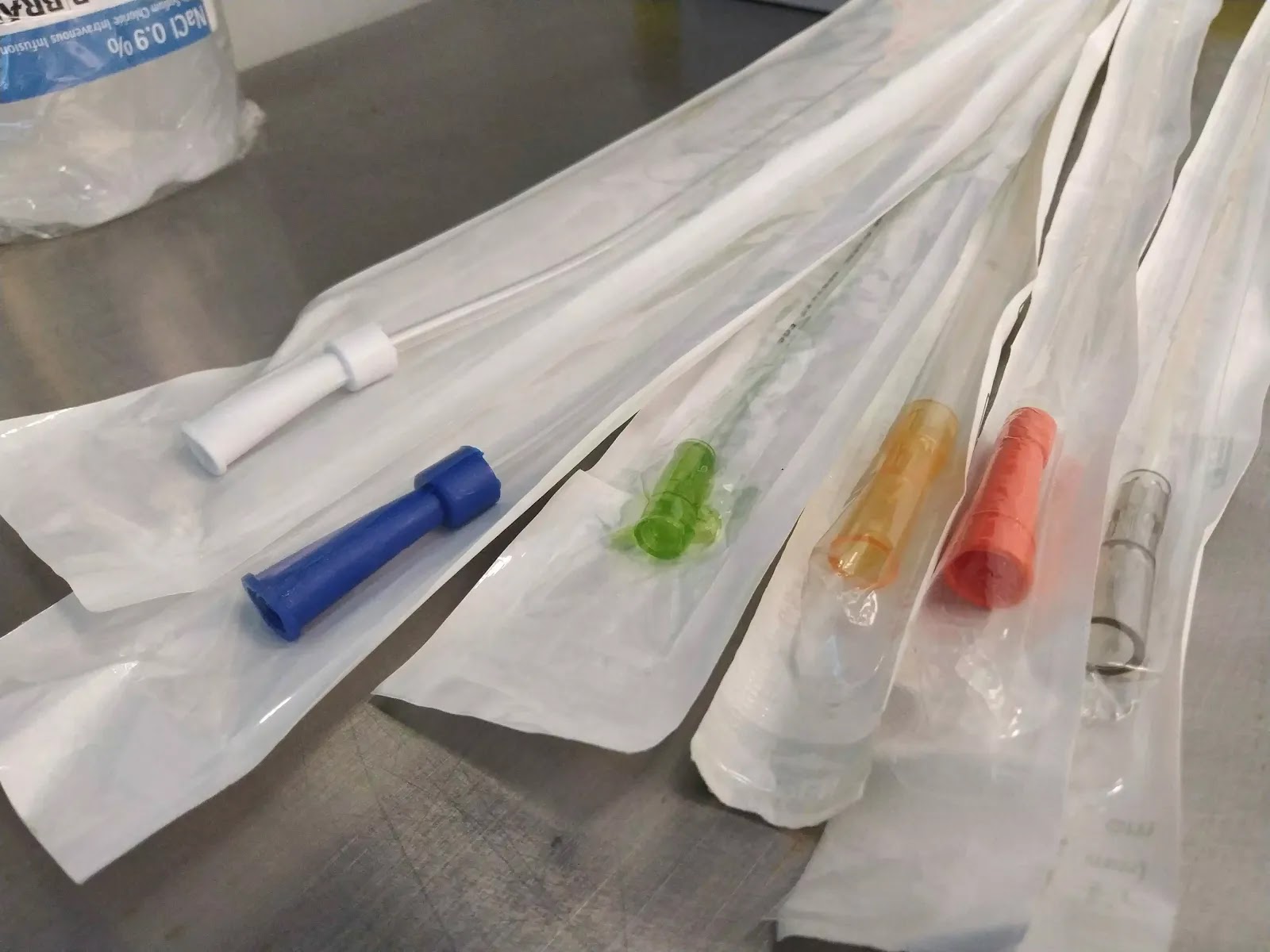

Post a Comment
Post a Comment